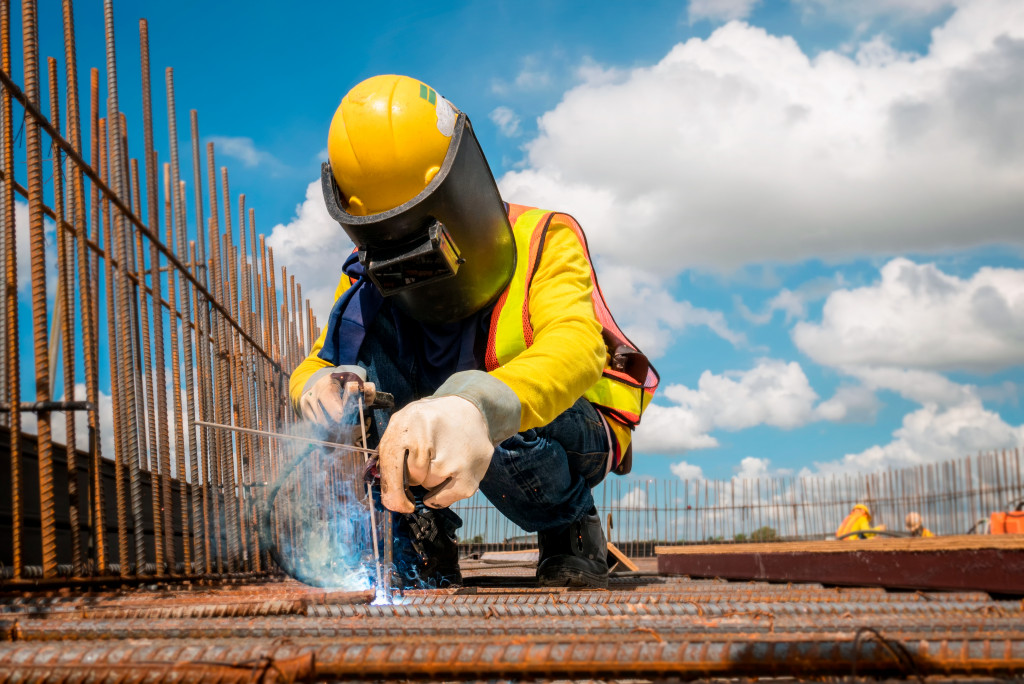The construction industry employs a number of different steps to keep its employees safe on the job site. Due to the nature of the industry, safety is always of great importance on construction sites. Workers are constantly exposed to hazardous conditions, dangerous equipment and materials, and other risks on the job site. Employers must make safety a priority in order to reduce on-the-job injuries. Some of these steps are as follows:
1. Organizing and planning before work begins
Planning is the first step in providing a safe work environment. Prior to beginning any construction task, employers must ensure that they have the correct permits, equipment, and materials on-site. They should plan a construction site layout that puts the employees and all people involved in a safer position, away from the many dangers of an unfinished build. Once all of these items are gathered, employees should go over safety procedures to make sure everyone understands what is expected for the task at hand.
2. Doing a walk-through of the site for any possible dangers
Construction sites involve a lot of wiring and cables, which might lead to dangerous conditions. Before any construction work starts, the employer or foreman should conduct an electrical safety walk-through. During the walk-through, they check all areas of the site for dangers so that employees can be protected against electrocution hazards. Other tasks performed before work begins should include planning for protection against falls, checking scaffolds and ladders, verifying that there are no obstructions in walking paths, and making sure that all tools have been properly inspected before use, from rigging blocks and tackles to handheld power tools.
3. Providing the proper equipment
In order to keep employees safe on a hazardous construction site, employers must make sure they provide their workers with the proper safety gear. This includes hard hats, goggles, gloves, boots, and any other safety equipment required for the position. This should also include providing workers with the necessary training and equipment that they need to complete their job safely. Employee training in the construction industry is not only required by law but also needed to ensure that workers are doing their job properly and safely.
4. Making sure all safety procedures are followed at all times
Employers must provide the necessary supervision to ensure that employees follow all of the safety protocols they have put in place. After an employee has completed their training, employers should check up on them periodically to make sure they are staying safe on the job site. An employee who is aware of his own safety measures will help make everyone feel better about their work environment.
5. Creating a safety committee
Creating an effective safety committee is another way for employers to make sure that they are providing a safe work environment for their employees. A safety committee can include employees, supervisors, managers, and other stakeholders in the industry who are interested in keeping workers safe on the job site. The committee will meet periodically to discuss any concerns or issues that may arise around working conditions. By addressing these concerns together as a group, employers can create better ways of protecting their employees against workplace hazards.
6. Applying for necessary insurance
In order to protect themselves from any dangerous situations, employers should make sure they have the appropriate insurance in place. General liability insurance is a common type of coverage that protects construction sites against injuries and property damage. Workers’ compensation insurance covers employees who are injured on the job due to an accident or incident. Employers must also have commercial auto insurance if they use vehicles to transport workers or equipment. These types of insurance will protect employers against lawsuits and reimbursements if their employees are injured in the workplace and unable to work.
7. Employers must understand and follow all labor laws

As an employer, it is important to make sure that you fully understand your rights and responsibilities as well as the rights and responsibilities of your employees. It is also important to make sure you are following any labor laws that might govern safety in the workplace, such as OSHA (Occupational Safety and Health Administration) guidelines. If employers fail to follow these guidelines, they can face fines, penalties, and other repercussions for noncompliance with government regulations
Construction employers have a number of responsibilities when it comes to ensuring employee safety. This includes creating and following safety procedures, providing the necessary equipment and training, making sure all employees are aware of these measures, and applying for the appropriate insurance. By following these steps, construction employers can create a safe working environment for their employees that minimizes the risk of injuries or fatalities on the job site.




